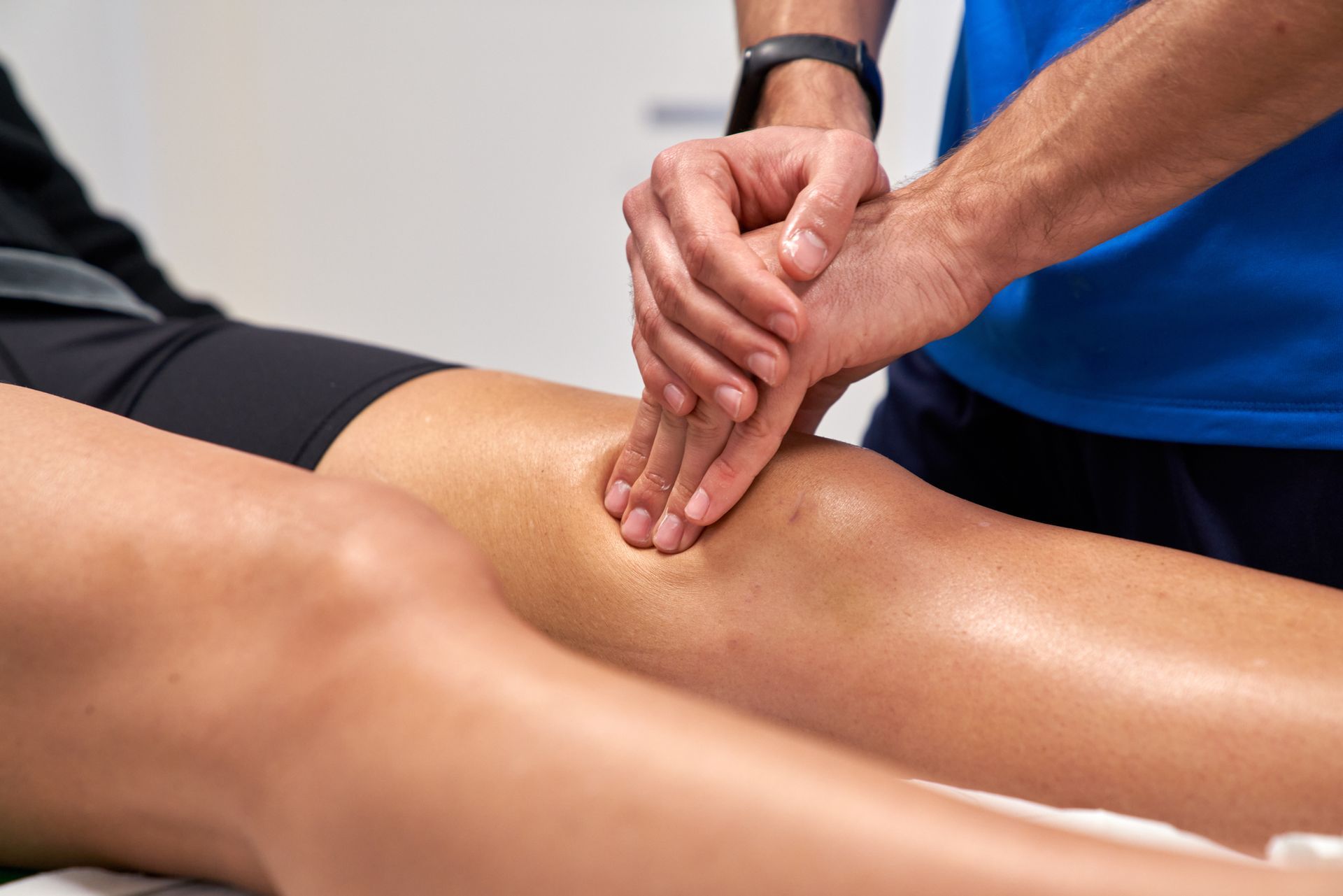4 Types of Knee Pain Chiropractic Can Could Treat
Admin • March 30, 2020

Chiropractic care isn't just for your back and neck pain. Chiropractors are often trained in therapeutic massage for other parts of your body, and chiropractic adjustments can often affect nerves that could cause symptoms in your legs and other regions.
So although chiropractic treatments may not be your first thought when you experience knee pain, you should keep in mind that your chiropractor may be able to help even though the pain isn't located in your spine.
Here are some examples of knee pain issues that chiropractic care could treat.
1. Patellofemoral Syndrome
Patellofemoral syndrome is a condition that causes pain when the patella doesn't stay in its designated track during knee bending. This condition is sometimes called runner's knee but it's not necessarily a sports injury; in fact, anyone can get this syndrome. Some risk factors include being female, having previous injury to the kneecap, being overweight, or having arthritis.
Patellofemoral syndrome doesn't always have a clear cause, but one potential cause is an imbalance or misalignment in your musculoskeletal system. For example, if your leg is rotated slightly out of line, perhaps because some muscles are more developed than others, this could throw the patella off-course.
Since adjusting musculoskeletal imbalances is a mainstay of chiropractic treatment, your chiropractor can help assess and correct any misalignments in your posture that could contribute to the pain.
2. Arthritis
Two major types of arthritis, osteoarthritis and rheumatoid arthritis, can both cause pain in knee joints and other joints. Osteoarthritis is a degenerative condition and rheumatoid arthritis is a chronic auto-immune condition, so treatment may focus on managing and mitigating symptoms.
Although chiropractic care doesn't cure these or other types of arthritis, it can still be a useful way to manage pain. And chiropractic care can also help to mitigate other symptoms of arthritis in addition to managing pain.
For instance, regular chiropractic manipulations can help you maintain and even increase your range of motion, and may even reduce inflammation. One of the great things about chiropractic care is that it's very non-invasive and can be used alongside more conventional treatments.
3. Sports Injuries
You probably aren't surprised to hear that a strain or other sports injury in your knee may benefit from chiropractic care. After all, your chiropractor can provide gentle non-invasive treatments that improve range of motion and decrease inflammation, which could be helpful for a variety of sports injuries.
However, you may be more surprised to hear that chiropractic care may act as a preventative for sports-related knee injuries. According to one study, chiropractic care may provide a significant improvement by reducing incidence of absenteeism due to non-contact knee injuries. So chiropractic could act as both a treatment and a preventive measure.
4. Sciatica
Although knee pain isn't the most well-known symptom of sciatica, it can be a significant problem. Your chiropractic practitioner may be able to reduce sciatica symptoms such as knee and leg pain.
A spinal adjustment can often be very effective in the case of sciatica, since the problem may be caused by a pinched nerve due to a spinal problem. Sciatica can cause extreme pain, so be sure to schedule an appointment for a professional diagnosis and treatment right away.
As you can see, several types of knee pain fall under the umbrella of the care your chiropractic office can provide. Although some knee problems may on occasion require other treatments such as surgery, chiropractic care may offer a complementary treatment for knee issues even if it's not the main treatment.
For more information on how chiropractic care can help you, contact Davison Chiropractic
today. We offer chiropractic treatments that range from spinal adjustments to therapeutic massage and more. Get in touch to schedule an appointment to diagnose and treat your knee injury or other condition.

Cold laser therapy, also called low-level laser therapy (LLLT) or low-power laser therapy (LPLT), is a non-surgical pain management treatment suitable for some patients who experience back and neck pain or certain injuries. Chiropractors and other health care professionals apply cold laser therapy to the pained or inflamed areas. The procedure uses a low-level laser that emits near-infrared light. The light from the laser is able to penetrate the skin and reach the body's deeper tissues. Once the tissues absorb the light, it interacts with the body's cells and speeds up the healing process. The laser light also helps reduce pain and swelling in damaged tissues. Uses Cold laser therapy is used primarily on patients who have chronic musculoskeletal pain. While the treatment works on different parts of the body for different injuries, like ligament and muscle strains, patients who have lasting lower back or neck pain often find relief from laser therapy. Cold laser therapy also helps patients who have arthritis, fibromyalgia, carpal tunnel syndrome, hip bursitis, and temporomandibular joint dysfunction (TMJ). Procedure and Results A single treatment session of cold laser therapy is typically short. Most health care professionals who administer the treatment spend 30 seconds to several minutes holding the handheld laser over the affected areas. Treatment sessions that cover a large area, such as the entire lower back, take longer since the laser device will need to be moved around to target one smaller area at a time. The procedure isn't painful, and you won't feel any vibration or hear any noise. Some patients can feel the laser, but most do not report it as uncomfortable. There is no standard for the number and frequency of cold laser therapy treatments. How many sessions you'll need depends on the severity and type of your condition and how well previous treatment sessions work. You may have to wait several weeks to a month to see the full benefit of cold laser therapy, and some patients need to have several short sessions a week to get maximum relief. Cold laser therapy has been the subject of multiple studies that have shown generally favorable results, though many of the studies have small participant groups. This treatment is FDA-approved, so you know it’s safe and effective. Advantages and Disadvantages One of the biggest advantages of cold laser therapy is that it is a non-invasive treatment method. Since cold laser therapy doesn't lead to any downtime for healing, it can be a good treatment choice for patients who experience pain but have busy lifestyles. The therapy also doesn't involve the use of any medications, which makes it appealing to patients seeking drug-free ways to manage their pain. However, you can combine it with medications and other treatment methods to provide additional relief. The main disadvantage many patients report is that cold laser therapy doesn't work immediately. Most patients need multiple treatment sessions — as many as 30 — to see a significant reduction in inflammation and pain. Another downside to cold laser therapy is that some health insurance providers won't cover the cost of the treatment. But some health care practitioners offer billing or payment plans to help patients afford the cost of the treatment. Risks Cold laser therapy is approved for use by the FDA, and it is considered safe for most patients. The treatment has very few side effects and is tolerated very well by most people. Testing on pregnant women is lacking, so pregnant women shouldn't have cold laser therapy. People who have open sores, suspicious moles, or cancerous lesions shouldn't expose their skin to lasers. Davison Chiropractic offers chiropractic adjustments, massage therapy, and pain management treatments to patients in Davison and Lapeer, Michigan and the surrounding areas. Contact us today to schedule an appointment.














